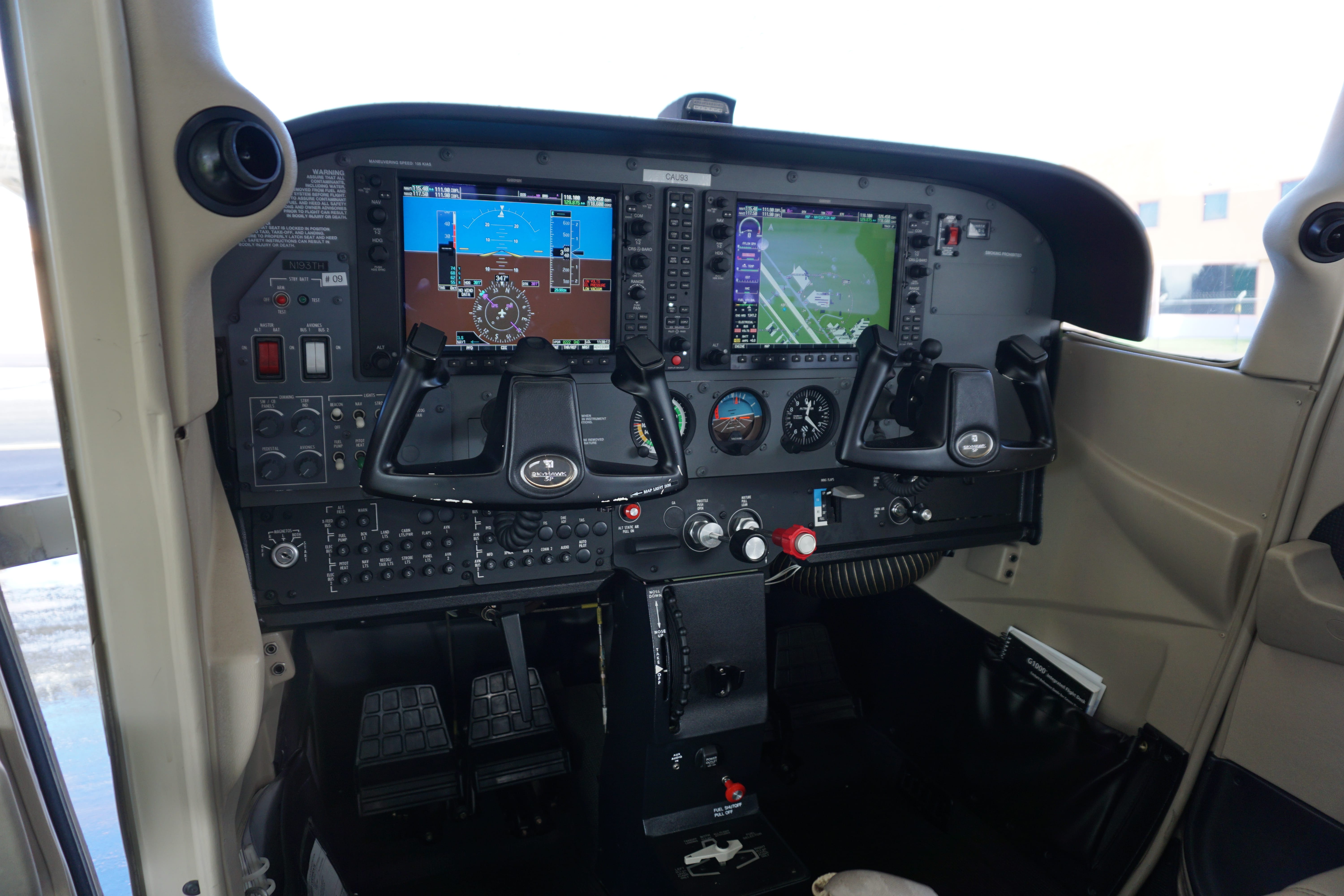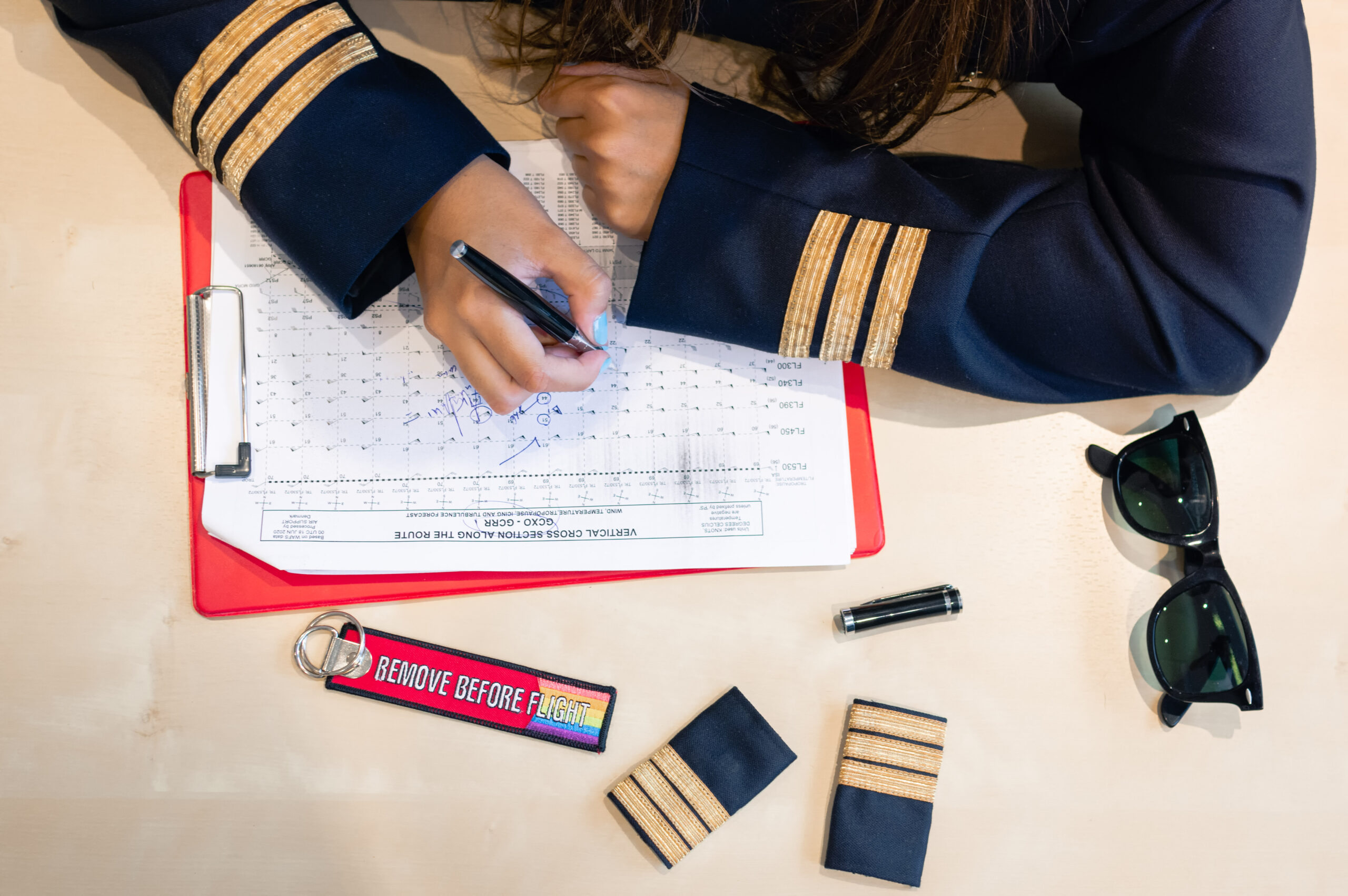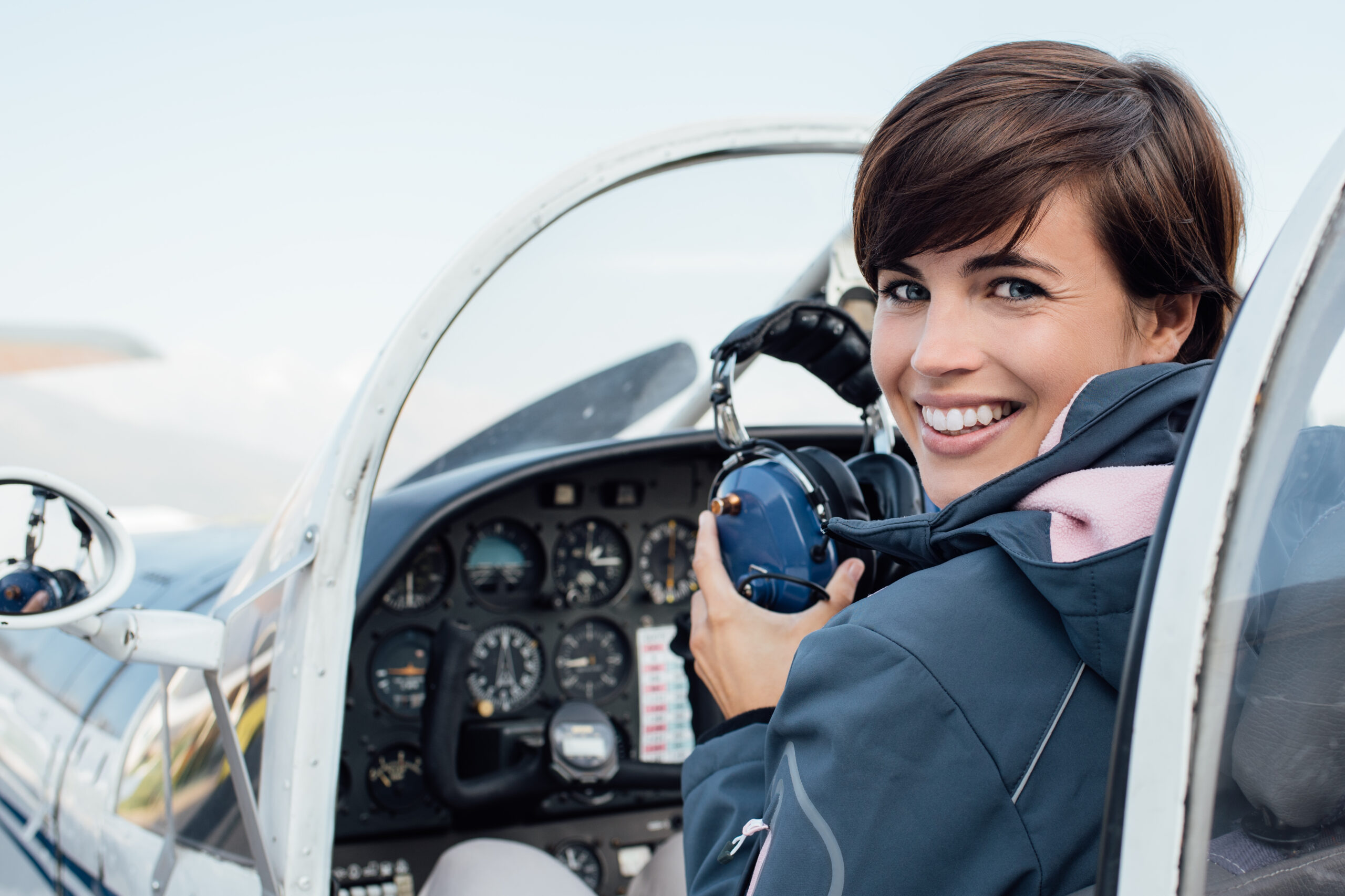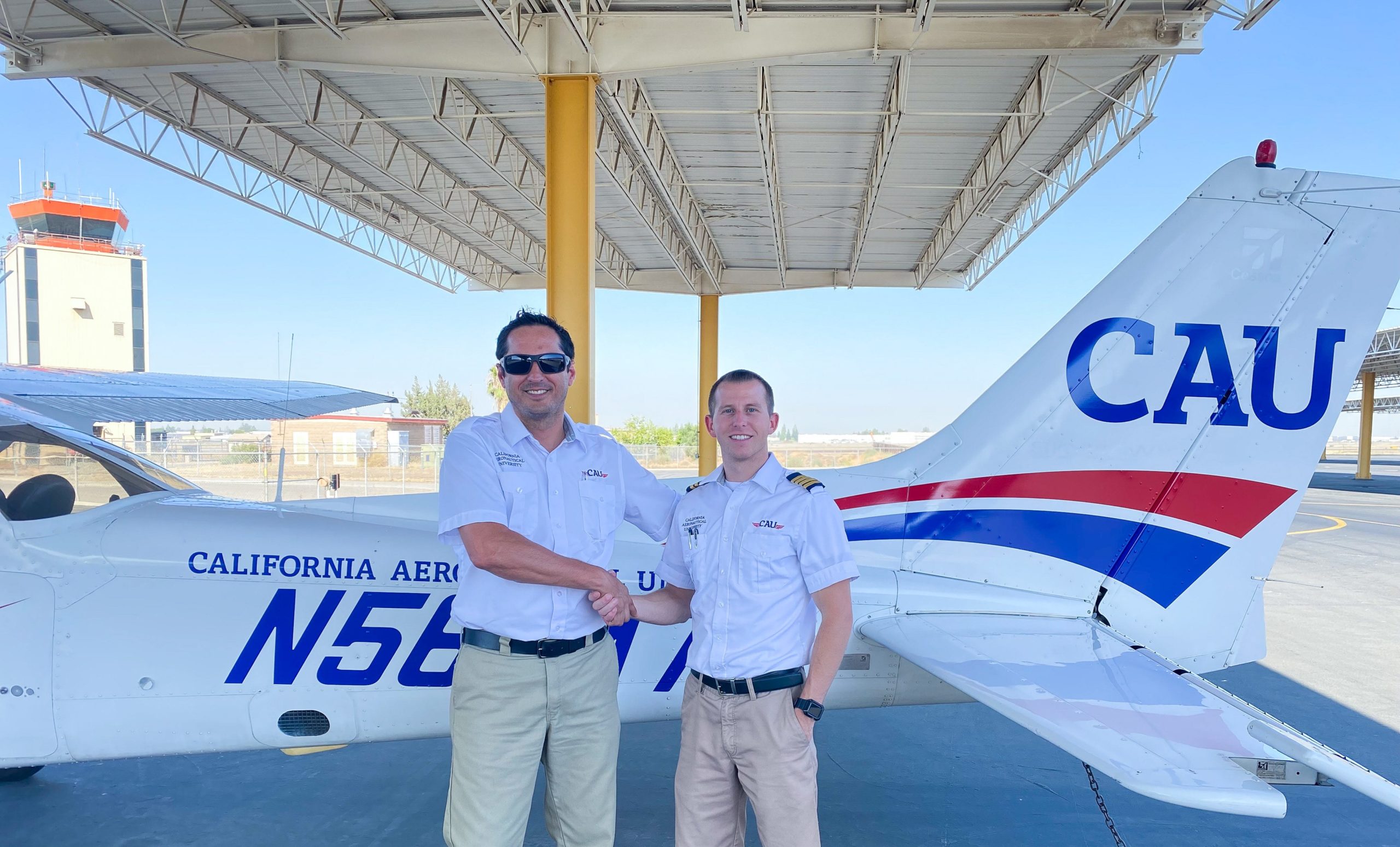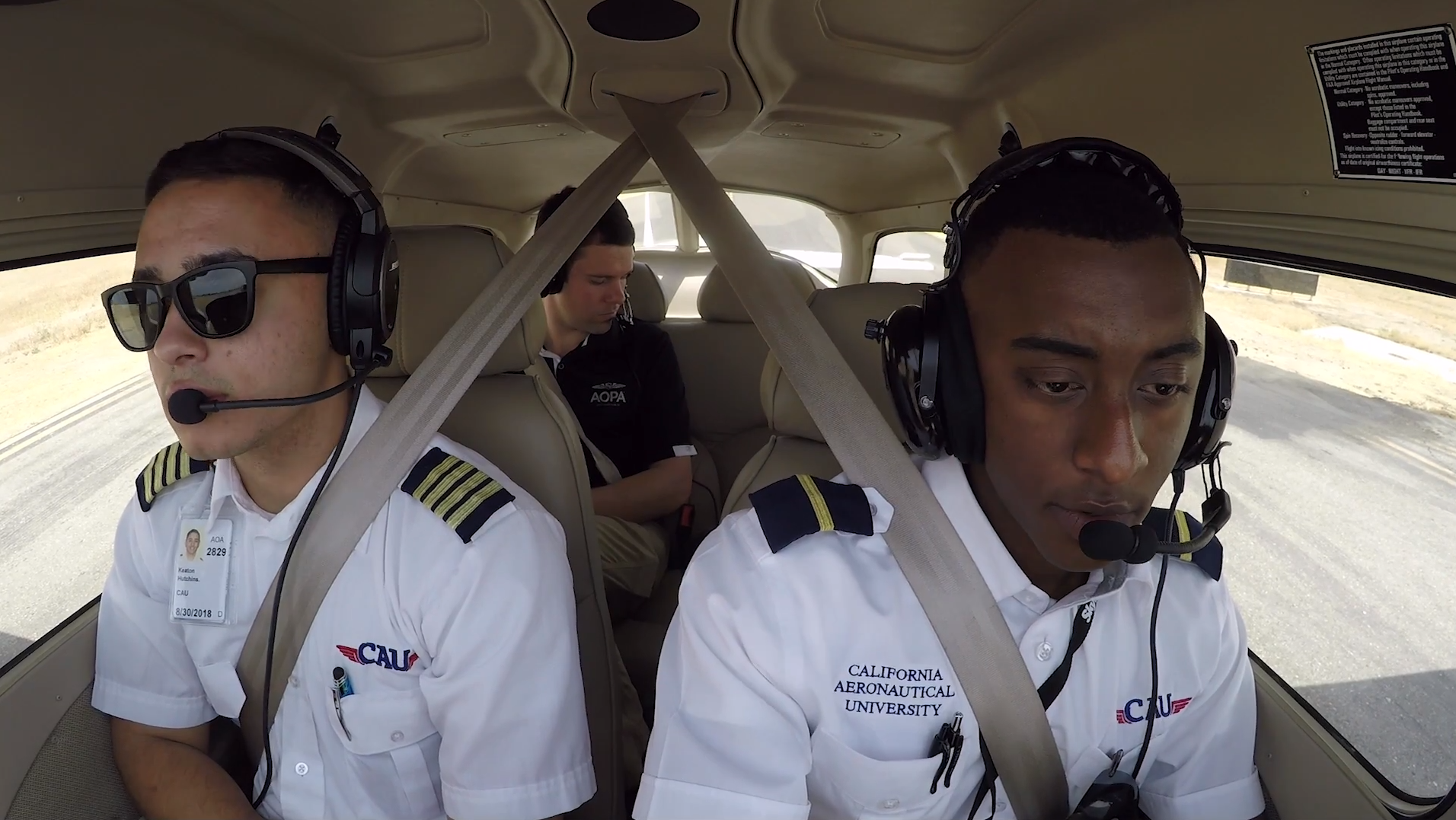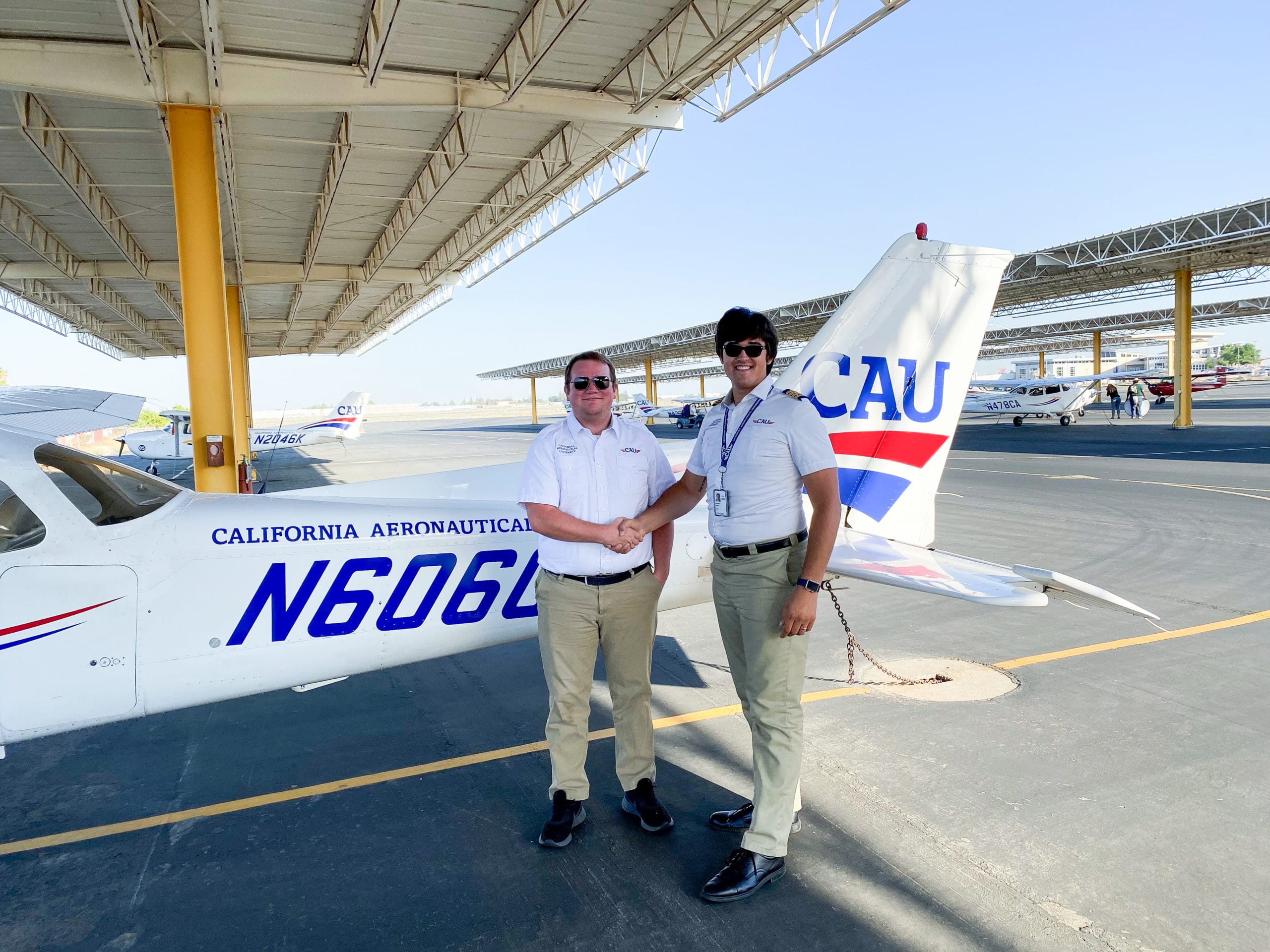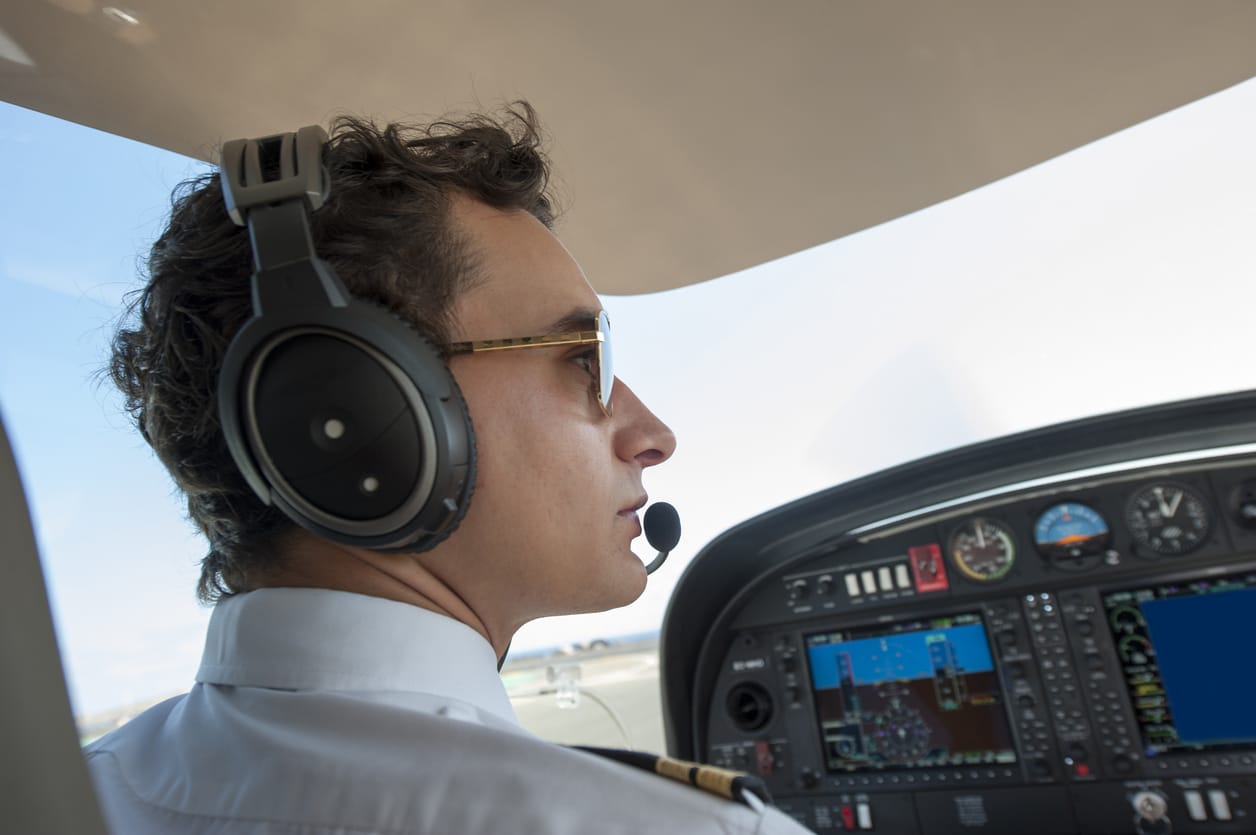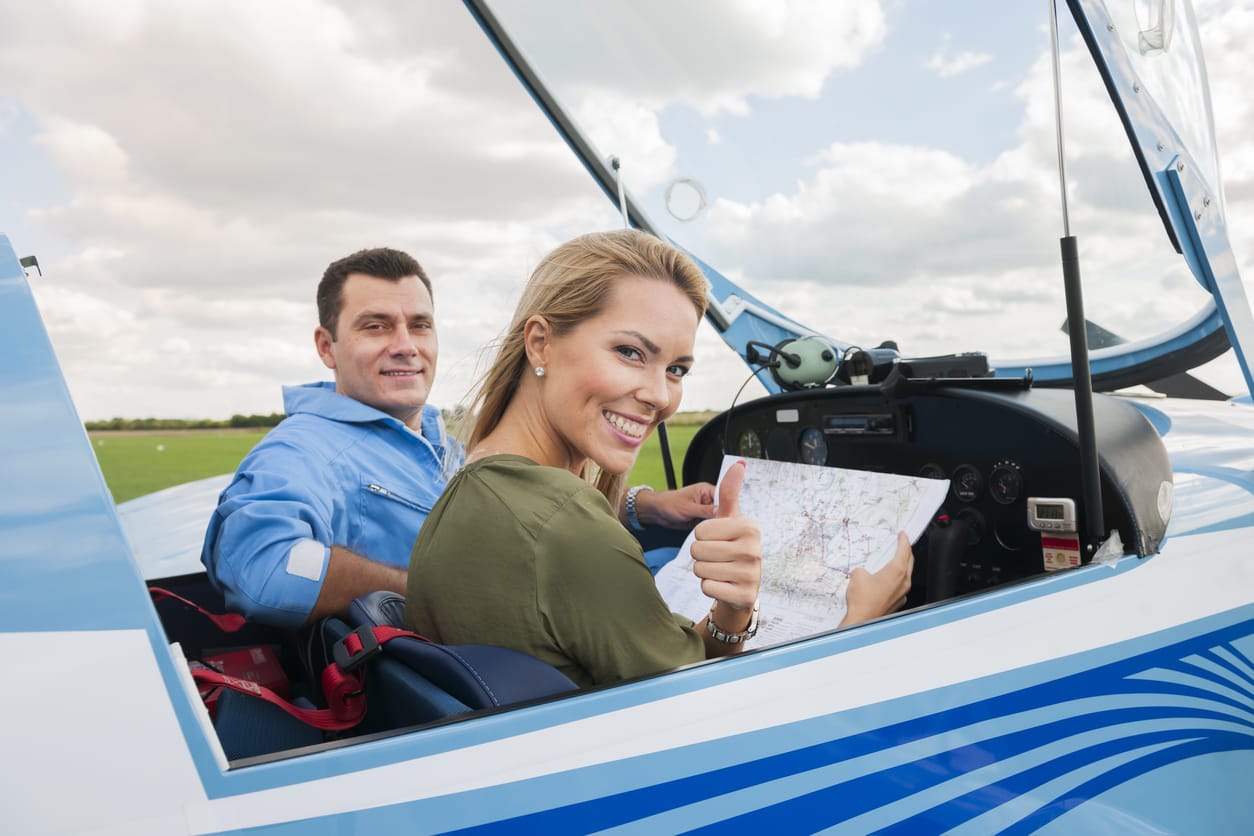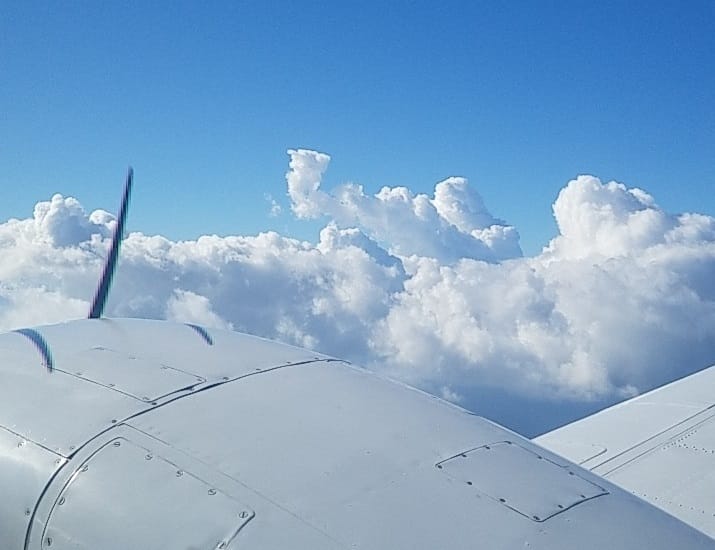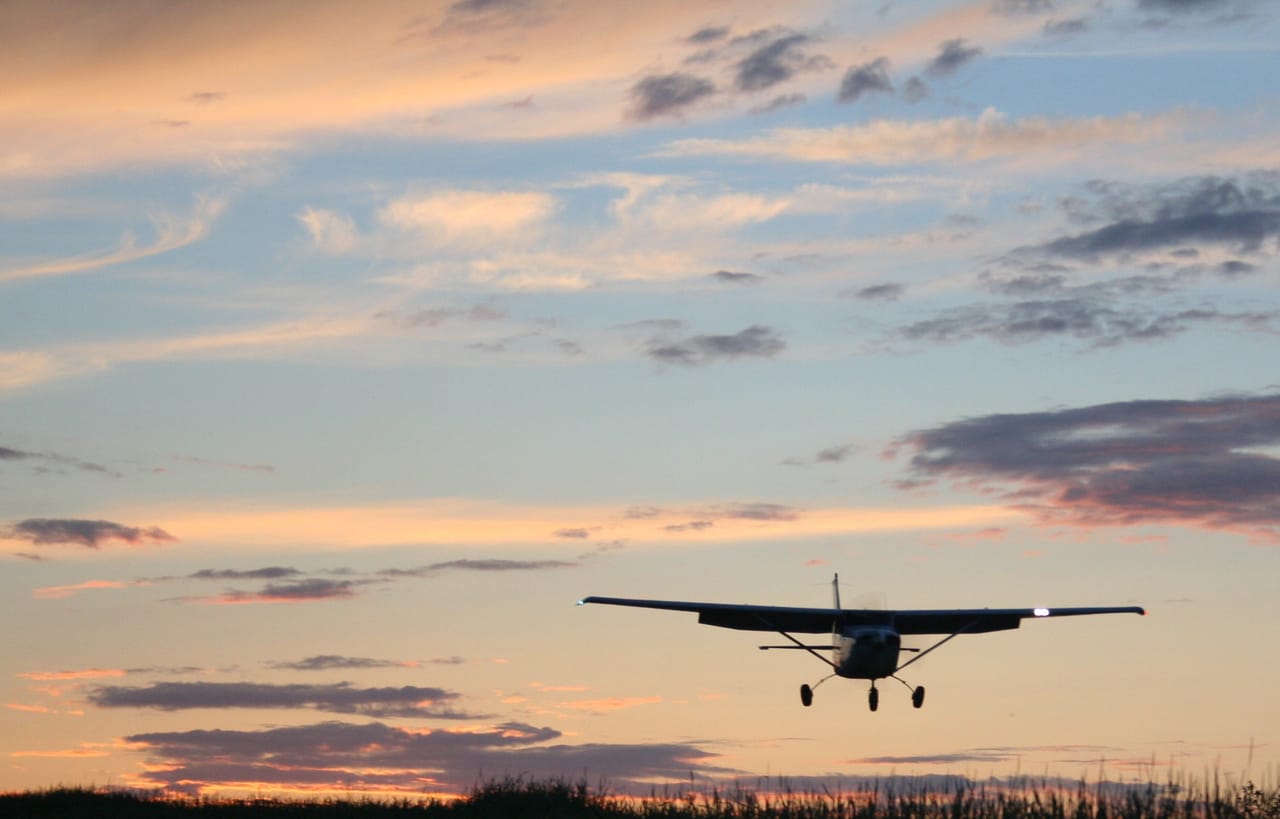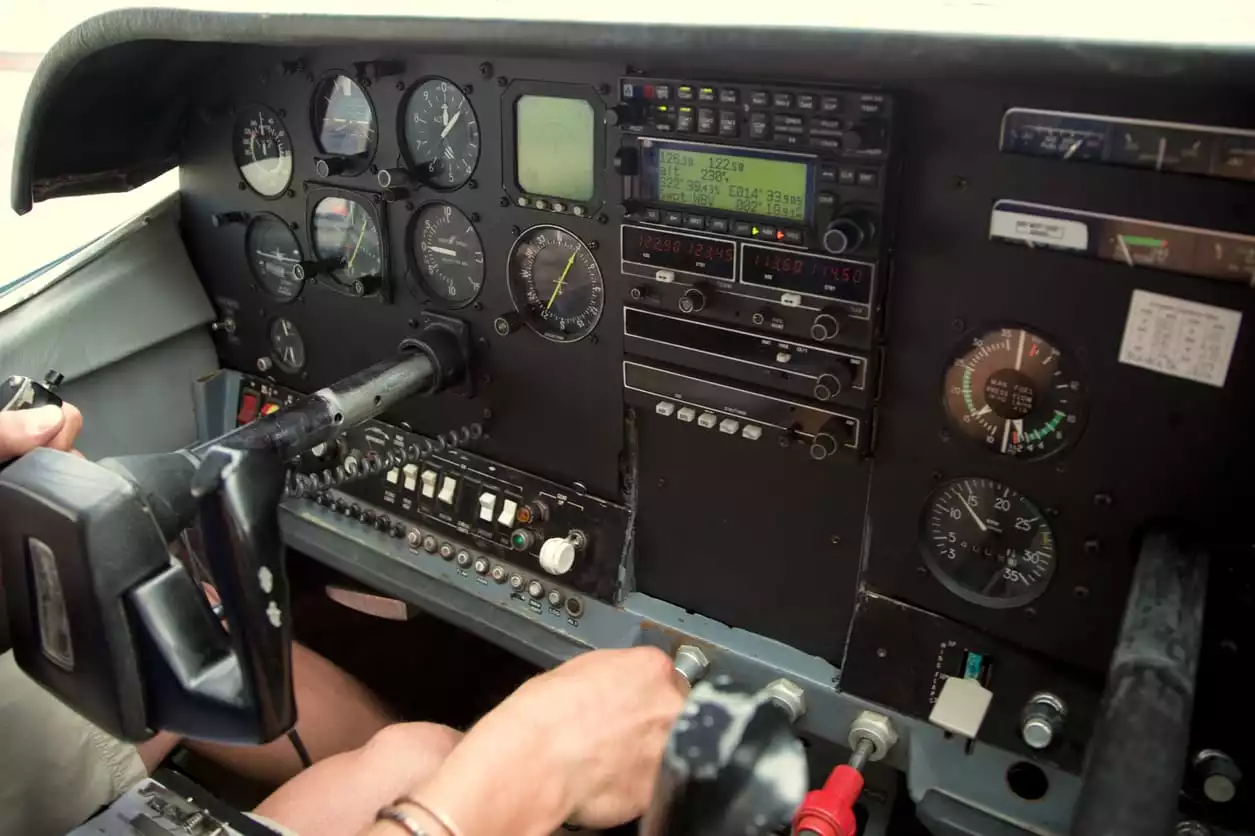Passengers in big airliners hear certain aviation sounds that have become commonplace in our flying experience. They hear machine made aviation sounds (like the engines humming as the jet flies through the air) and other assorted things like the flight attendant call button tones. But, on the whole, the auditory environment within the giant flying tube is pretty unremarkable.
On the other hand, one of the most interesting advantages of being a passenger (or pilot) in a four-seat, private plane is the much-more diverse auditory environment. While some of those aviation sounds might be confusing to passengers, they all signify something noteworthy. Let’s consider them, grouped by source. We will begin with what might be called “natural sounds,” and then move on to what might be called “man-made sounds.”
Natural Sounds in Small Airplanes
Let’s think of natural sounds as those made as a result of flight, but not made by the pilot or by the airplane systems. Almost all of these take place because parts of the airplane are interacting with the environment.
Tires on the Ground
Probably the most remarkable natural sounds from the wheels/tires happen during the final phases of the landing. It is not unusual at all to hear some skidding sounds, very much like a car skidding to a stop at a red light. There are some landing techniques that require that the wheels be braked to a point immediately before they skid, so the pilot must reach the skid with heavy braking, then back off a little bit.
There is also a not-uncommon “squeal” that can occur as an airplane touches down prior to the brakes being applied. This happens because the wheels transition from not moving at all to spinning instantly sometimes at close to 100 miles per hour.
Another sound that might be surprising to a passenger or pilot in training would be how noisy the tires become as they roll over the runway when the airplane is about to take off. Not all runway surfaces are perfectly flat or smooth. An airplane is not as sound-insulated as is a car, so the “road noise” can become extremely noticeable, particularly just before lift-off. In reality, though, the engine sounds (see below) tend to drown most of that road noise out.
Air Noises
The way a pilot controls an airplane once it is off the ground is by putting pieces of metal or fabric in the way of the airstream. Moving the yoke (“steering wheel”) or rudder pedals makes large pieces of airplane move into the wind stream. The air then pushes against the thing that’s sticking out there, and that results in the airplane turning or otherwise moving relative to its current flight path.
Although in a giant airliner you generally cannot hear the air noises, in a smaller airplane they become evident. If a pilot makes a turn, particularly if it is a somewhat sharp turn, you may hear the air interacting with the machines aerodynamic surfaces. The sound can intensify just because the airplane is changing direction.
Sometimes, particularly during a rapid, deliberate descent, the pilot will bring the engine back to a rather quiet idle. At that point, the pilot and passengers can usually hear the air hitting the airplane as it descends quickly. It’s a very interesting sound, and if you’re lucky enough to be a passenger in a private plane, you may want to ask your pilot to produce the descent wind sound for you just so you can enjoy it on purpose.
Man-Made, Deliberate Aviation Sounds
There is a rich variety of aviation sounds that an airplane can make, and these sounds are usually constructed to announce something to the pilot. The more you know about or anticipate these sounds, the more comfortable you will be flying and the more integrated you will be into the entire flying experience. So let’s talk about a few of these.
The electrical and mechanical aviation sounds that one will hear in an airplane depend significantly on how that airplane is equipped. Many newer airplanes have sophisticated electronic systems, and those systems tend to provide aural notice of what’s going on. Older airplanes, or less-sophisticated ones, tend to be a lot quieter (other than their engines). For this article, we will pay particular attention to some of the sounds that you might hear in what in aviation is called a “TAA,” which means a technologically advanced aircraft.
Preflight Sounds
All pilots must do something called a preflight before accepting an airplane as ready to fly. During some phases of that preflight, even before the engine has not been started, the pilot will need to flip switches, move controls, and do other things to check systems.
TAAs have highly-sophisticated electronic sensors and instruments. These are called “avionics,” which is a contraction of “aviation” and “electronics.” When the avionics are turned on, there is often a series of aviation sounds that give the pilot information on the health of all of those systems. It can sound pretty complicated, but, of course, the pilot uses this information for analysis of the state of the airplane’s systems.
During the pre-start-up check, for example, one must check that the electric fuel pump is working. When you flip a fuel pump switch to the ON position, you’ll hear kind of a fast, even grinding sound, which is actually the fuel pump pumping fuel. Also, the avionics cooling fans have to be checked in many airplanes, and these sound like, well, fans.
Airplane Start-Up Sounds
Many passengers are quite surprised about how loud it gets in the cockpit once a small airplane is started. It is nothing like the sound of a street-legal car. Airplanes usually have mufflers and short exhaust pipes, but these are much less effective in reducing noise than our car mufflers. Add to this the fact that, when an airplane starts, there is a very high level of vibration that also surprises passengers. The combination of the loud sounds and vibrations can result in a remarkable sensory experience for the passengers. Often, a good pilot will prepare his passengers ahead of time by telling them about those things.
When an airplane is in flight, those engine sounds are also occurring. That is one reason that passengers may be given headsets to don. They not only help ease communications within the cockpit, but they can also deaden some of those very loud sounds.
Navigational Equipment Sounds
Navigational equipment, primarily the autopilot, give the pilot a lot of information from aviation sounds. For example, Garmin G-1000-equipped airplanes will emit a loud, distinct high-low electronic couplet automatically whenever the autopilot is disconnected. This happens whether the pilot has disconnected the autopilot on purpose, or if the autopilot decides to disconnect itself for one reason or another.
In some sophisticated avionics systems, if an airplane has been set to climb to a particular altitude (or to descend to a particular altitude), the airplane will give a warning when the target altitude is exactly 1000 feet further up or further down. That sound will just seem to come out of nowhere for a passenger, but, to the pilot, it’s a nice reminder to prepare for the upcoming level-off.
Communication Sounds: That’s’ Me!
During many phases of flight, a pilot must communicate over the radio with either air traffic control (ATC) or with other pilots. Some sophisticated intercom systems allow the pilot to share or specifically not share those radio communications with the passengers who are hooked into the airplane with their headsets.
One of the fun things about being able to listen and to a pilot’s communications is being able to know when ATC or other pilots are talking to you. Each airplane has its own unique number. For airplanes registered in the continental the United States, that number always begins with the letter “N.” There is a placard on the airplane’s panel (“panel” is what an airplane’s dashboard is called), and that placard has your airplane’s number. For example, that placard may read N5624K. The “N” at the beginning of that number is rarely used in radio communications. To help avoid miscommunications, the international phonetic alphabet (Alpha, Bravo, Charlie, Delta, etc.) is used instead of the individual letters. The call sign example earlier in this paragraph would sound like this: 5-6-2-4-Kilo. Note that the characters are separated. You would not hear “five thousand six hundred twenty-four Kilo.” This oral separation of characters helps avoid miscommunication. Ask your pilot where the placard is so you don’t need to memorize the airplane’s “N-number.”
After an airplane has been identified by voice by an air traffic control facility, in most cases subsequent communications with that ATC station will just use the final three characters. In our example, that would be 2-4-Kilo.
The Stall Warning Horn
This sound deserves special treatment here because it occurs during at least half of one’s landings, and it can be confusing or even startling for passengers who are not used to flying in small planes.
An aerodynamic stall occurs when an airplane loses lift. While in route, the airplane will rarely encounter a stall. Still, if it is about the stall, it is encouraging that the pilot can get an extra stall warning when he or she hears the stall warning horn.
Just before touching down during a normal landing, very often the airplane is stalled deliberately maybe a foot or two above the runway. This is one of a large variety of landing techniques that the pilot may choose to use, and it can even occur inadvertently if the winds change while the airplane is immediately above the runway. It is almost never anything to worry about, but you should know that it may occur. The stall warning may do its long beep for several seconds, unlike most other electronic sounds that are very brief.
Again: The stall warning horn heard just before touchdown is a very common occurrence and almost never indicates any problem whatever.
Conclusion
Aviation sounds that accompany ground and flight operations with “small,” private airplanes are rich in meaning and extremely-different from sounds one may hear from a large passenger jet or an automobile. The auditory environment is just one of multiple interesting factors separating the infinite joy of flight from earth-bound life.
Ready to soar in your aviation career?
Mr. Matthew A. Johnston has over 23 years of experience serving various roles in education and is currently serving as the President of California Aeronautical University. He maintains memberships and is a supporting participant with several aviation promoting and advocacy associations including University Aviation Association (UAA), Regional Airline Association (RAA), AOPA, NBAA, and EAA with the Young Eagles program. He is proud of his collaboration with airlines, aviation businesses and individual aviation professionals who are working with him to develop California Aeronautical University as a leader in educating aviation professionals.
